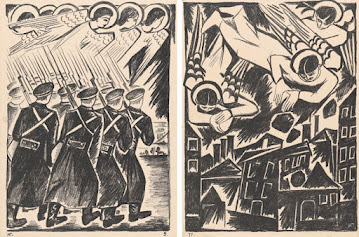Non-Western: Japan's Woodblock Prints
Ukiyo-e , which means "pictures of the floating world", was the name given to the genre of art of Japanese printmaking that flourished between the 17th to 19th centuries. During this time the woodblock printing technique gained popularity, originally with subjects such as female beauties, historical and folk tale scenes, as wells landscapes and scenery. When it came to traditional prints, they were made by carving a flipped image into a block of wood, dipping the block into ink, and then pressing the block onto a medium (such as paper or textile). At first, the earliest prints were completed in black in white ( sumizuri-e ), as hand-coloring was too time-consuming for the publics' growing demand for prints; however, the invention of the Nishiki-e technique during the Edo period by printmaker Suzuki Harunobu helped increase the output and help popularized woodblock printing. A Nishiki-e print, which has become the commonality, is created by carving a separate woodblock ...



